Today, Facebook opens up Instant Articles to all publishers. If you don’t know, Instant Articles are Facebook’s new way to natively load articles within the app using an adapted RSS feed. These native articles, which have a lightning bolt in the top right corner, load in half a second—10x faster than if user was to click out to a website. From what I’ve seen so far, they really do load instantaneously and have a great layout and user experience. And if you’re paying attention, you’ll understand that this is their third push for native media consumption: first photos, then videos, and now written content.
Mark Zuckerberg announced native Instant Articles as a feature update about a year ago and Facebook has been slowly rolling out and improving the product ever since. Facebook started with the biggest publishers in the game: BuzzFeed, Huffington Post, New York Times, Washington Post. BuzzFeed has seen their Instant Articles engage more people than any of their standard link posts and Gawker’s founder tweeted that instant articles boosted daily uniques to their website.
Stats… After Gawker properties live on Facebook Instant Articles, US UVs up to 4.7m, from earlier norm of 4m. pic.twitter.com/TB1GTGt9ss
— Nick Denton (@nicknotned) March 1, 2016
However, as of today, Instant Articles become available to anybody with a Facebook page and a blog. This is a key opportunity for small blogs and publications to get ahead of the game and really understand how best to use the new product. For example, not only can publishers create and distribute mobile-friendly content, but it also allows the ability for publishers to monetize the ad space within each article. Publishers will be able to directly sell their own display ads and keep 100% of the revenue and utilize Facebook’s Audience Network, their programmatic ad network (which considering the user-data Facebook has, is killer). Of course, just like any other update, there will be winners and losers depending on how you play the game. It’s up to you to test and figure out what works best for you.
But when I really look at Instant Articles, and the other new updates I’m sure that they’ll announce today at their F8 conference, I’m asking myself one question: Has Facebook been able to achieve what AOL could have a generation ago? By that I mean:
Has Facebook become a layer on top of the Internet itself?
Let me explain. If you think about our behavior on AOL in the early to mid 90’s, people never really left AOL to go on the world-wide-web. After they logged in with dial-up, not only did they have email and instant messaging, but they were also on a page that provided them with (slightly curated) news, weather, videos, images, games, and articles. Users had no reason to leave the AOL hub to explore the Internet on their own. Sound familiar?
If Facebook is able to pull off this move from a media standpoint, they will be the layer of medium consumption above the Internet itself. Think about it: now instead of going to Time, Inc., or Sports Illustrated, you’re consuming through and in Facebook’s native environment. There’s no reason to leave Facebook’s app at all.
Having an all-native interface that’s overlaid on top of the world-wide-web is the ultimate ambition for an internet company. It’s an ambition that nobody thought was going to be possible after AOL lost its foothold in the last decade. Facebook is dangerously close to being able to pull it off. If Zucks was able to acquire Snapchat 18 months ago like he wanted to, and if they were to developed an OTT (over-the-top) network that competed with Netflix, Facebook would basically be the anointed winner of the entire Internet.

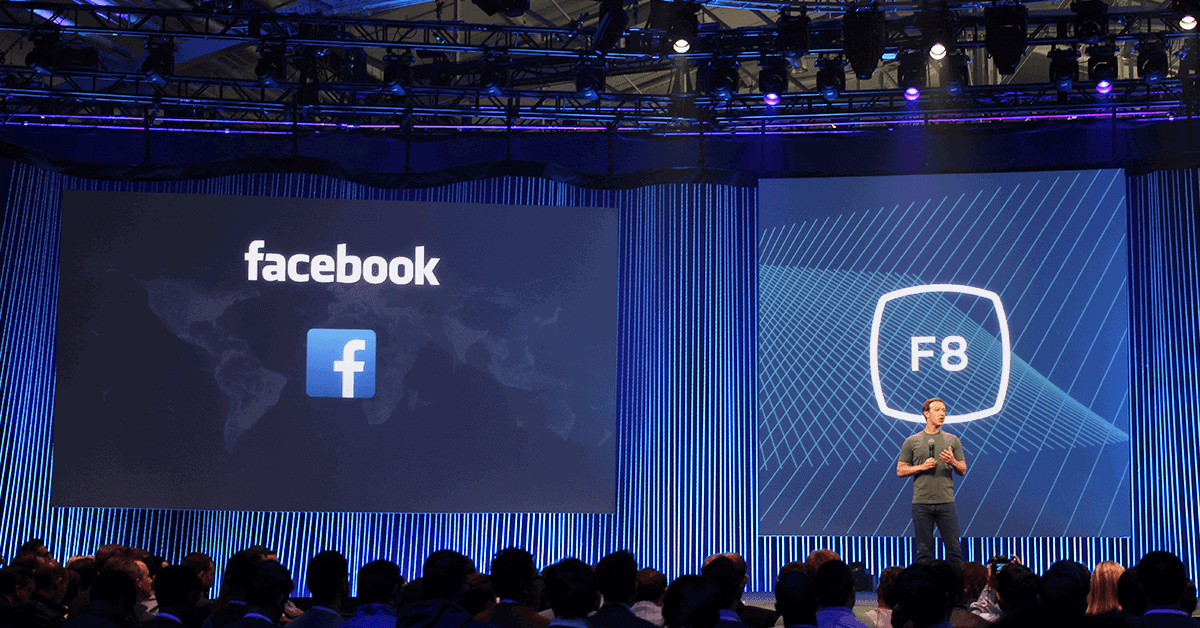


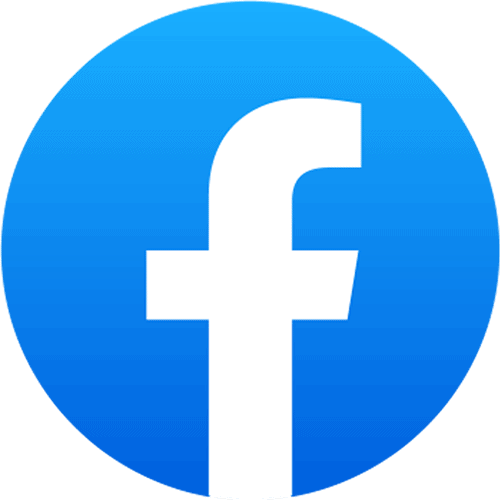
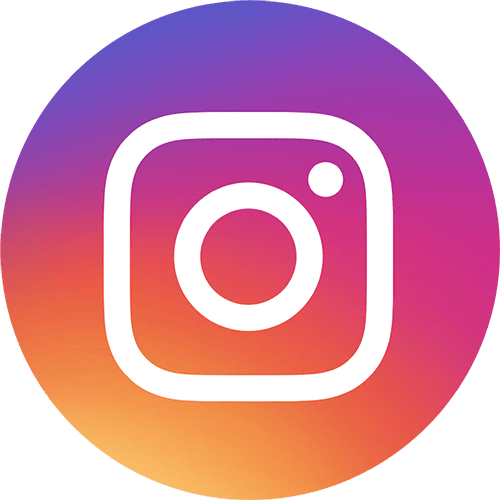
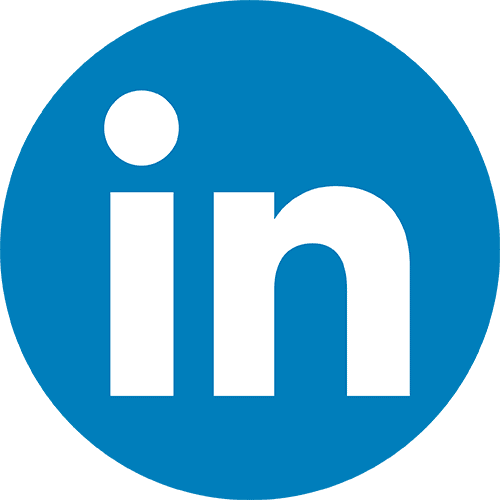
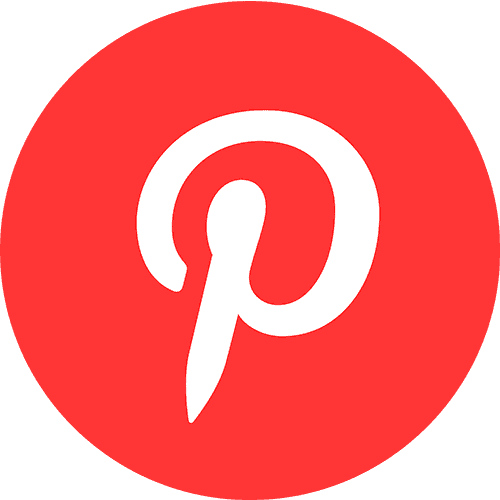

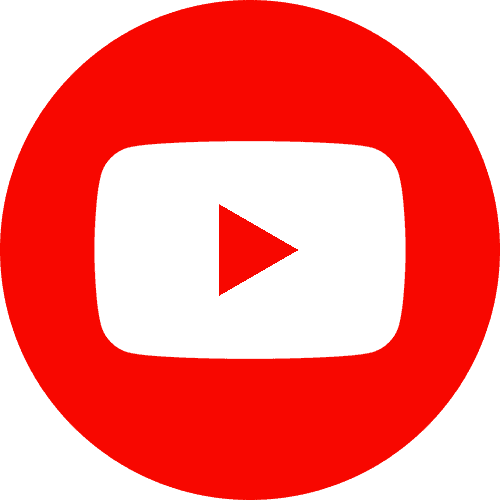
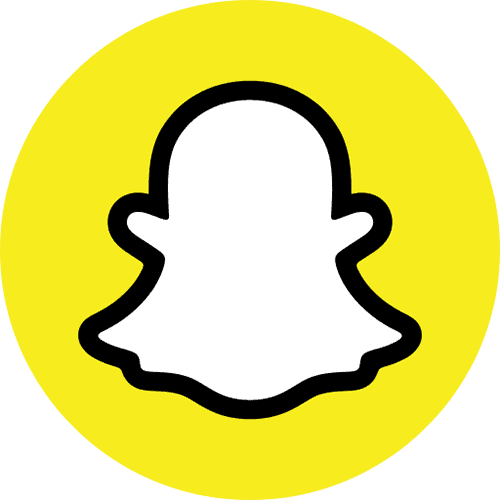
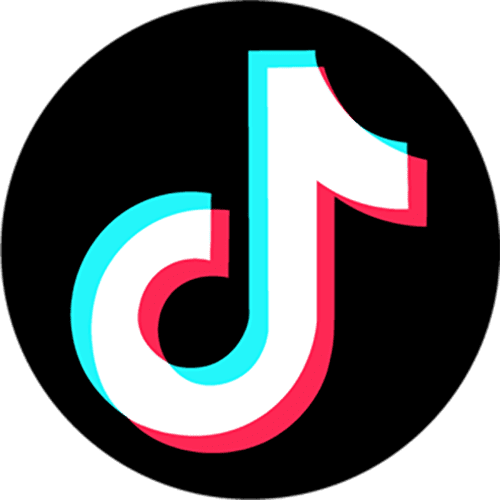
pin up 306: pin-up casino giris – pinup azerbaycan
пин ап кз http://pinupaz.bid/# pin-up casino giris
пин ап казино
pin-up casino giris: pin-up oyunu – pin up casino
пин ап http://pinupru.site/# пинап казино
пин ап кз
pin up az pin up 306 pin up azerbaijan
пин ап кз: пинап кз – pin up kz
пин ап пин ап казино онлайн pin up
https://zithromax.company/# zithromax for sale cheap
cheap Rybelsus 14 mg: order Rybelsus for weight loss – cheap Rybelsus 14 mg
https://zithromax.company/# zithromax 250 mg
https://gabapentin.auction/# neurontin 400 mg capsules
how to get zithromax over the counter: zithromax for sale – zithromax buy
https://gabapentin.auction/# order neurontin over the counter
https://gabapentin.auction/# buy neurontin 300 mg
where can you buy zithromax
https://stromectol.agency/# minocycline 50mg without prescription
http://zithromax.company/# where can i buy zithromax uk
generic zithromax azithromycin: buy zithromax z-pak online – zithromax antibiotic
http://amoxil.llc/# price for amoxicillin 875 mg
http://stromectol.agency/# ivermectin brand name
can you buy zithromax over the counter in australia
neurontin 800: neurontin tablets 300 mg – neurontin cap
https://amoxil.llc/# amoxicillin from canada
https://stromectol.agency/# buy minocycline 50 mg
http://gabapentin.auction/# neurontin prices
cheap zithromax pills
http://stromectol.agency/# stromectol 3 mg price
cost of neurontin: gabapentin best price – neurontin without prescription
https://stromectol.agency/# ivermectin 400 mg
buy generic zithromax no prescription
https://zithromax.company/# zithromax online no prescription
https://gabapentin.auction/# neurontin 4 mg
zithromax 500 mg: zithromax for sale – zithromax prescription online
https://zithromax.company/# buy generic zithromax online
can you buy zithromax over the counter in mexico
http://amoxil.llc/# amoxicillin 500mg capsules price
http://stromectol.agency/# stromectol 12mg
ivermectin buy: cheapest stromectol – ivermectin 0.1 uk
http://stromectol.agency/# ivermectin cost australia
zithromax cost canada
https://stromectol.agency/# minocycline 100 mg without doctor
buy cheap generic zithromax: order zithromax – buy cheap generic zithromax
https://stromectol.agency/# ivermectin 1%
https://amoxil.llc/# can i buy amoxicillin online
buy zithromax online australia
http://stromectol.agency/# buy stromectol pills
amoxicillin 875 mg tablet: cheapest amoxil – amoxicillin 30 capsules price
https://gabapentin.auction/# neurontin tablets no script
can you buy zithromax over the counter in mexico
buy generic neurontin: buy gabapentin – neurontin canada online
https://amoxil.llc/# where can i buy amoxicillin over the counter uk
https://semaglutide.win/# Buy compounded semaglutide online
buy zithromax 1000mg online
amoxicillin buy online canada: order amoxicillin 500mg – order amoxicillin 500mg
http://stromectol.agency/# ivermectin online
can i buy zithromax over the counter in canada
cheap ed drugs http://mexicanpharm24.pro/# buying prescription drugs in mexico online
best online pharmacies in mexico: mexican mail order pharmacies – mexican pharmaceuticals online
pumps for ed: buy ed pills – erectile dysfunction
https://drugs24.pro/# non prescription ed drugs
world pharmacy india
buy ed pills https://drugs24.pro/# viagra without doctor prescription amazon
pharmacies in mexico that ship to usa: mexican rx online – mexican online pharmacies prescription drugs
cheap pet meds without vet prescription: best ed treatment – drug prices
mexican online pharmacies prescription drugs buying prescription drugs in mexico online buying prescription drugs in mexico
https://indianpharmdelivery.com/# Online medicine order
Online medicine home delivery
pharmacies in mexico that ship to usa: medication from mexico pharmacy – mexico pharmacies prescription drugs
india online pharmacy: buy prescription drugs from india – indian pharmacy online
ed meds online without doctor prescription http://indianpharmdelivery.com/# Online medicine order
indianpharmacy com: online shopping pharmacy india – india pharmacy
mexican pharmaceuticals online: mexican pharmaceuticals online – buying prescription drugs in mexico online
https://mexicanpharm24.pro/# buying prescription drugs in mexico
best india pharmacy
cheap erectile dysfunction: ed meds online without doctor prescription – ed pills that really work
mexico drug stores pharmacies: buying prescription drugs in mexico online – mexico drug stores pharmacies
canadian online drugstore http://mexicanpharm24.pro/# mexico pharmacies prescription drugs
buy prescription drugs without doctor https://mexicanpharm24.pro/# reputable mexican pharmacies online
http://mexicanpharm24.pro/# mexican drugstore online
top 10 online pharmacy in india
https://mexicanpharm24.pro/# medicine in mexico pharmacies
Online medicine order
http://paxlovid1st.shop/# paxlovid covid
cheap erectile dysfunction pills online
buy clopidogrel online clopidogrel bisulfate 75 mg Cost of Plavix on Medicare
paxlovid generic: best price on pills – paxlovid price
paxlovid covid: paxlovid shop – paxlovid india
http://clopidogrel.pro/# generic plavix
new erectile dysfunction treatment
stromectol lotion: best price shop – stromectol cream
Paxlovid over the counter: paxlovid price – Paxlovid over the counter
cheaper rybelsus price buy semaglutide online
minocycline 50mg tablets for human: stromectol 1st – ivermectin cream canada cost
ivermectin human cheapest stromectol ivermectin 5
minocycline 100 mg over the counter: ivermectin 10 mg – minocycline 100mg otc
https://clopidogrel.pro/# п»їplavix generic
generic ed pills
Paxlovid over the counter: best price on pills – paxlovid pharmacy
buy paxlovid online buy here paxlovid cost without insurance
ivermectin lotion price: best price shop – minocycline 50 mg tablets online
rybelsus.icu: good price – rybelsus generic
paxlovid price buy here paxlovid for sale
https://clopidogrel.pro/# buy clopidogrel bisulfate
male dysfunction treatment
п»їplavix generic: Plavix generic price – buy clopidogrel bisulfate
stromectol price: best price shop – stromectol 3 mg tablets price
Cost of Plavix without insurance: Clopidogrel 75 MG price – Clopidogrel 75 MG price
buy clopidogrel bisulfate clopidogrel pills buy plavix
Cost of Plavix on Medicare: best price on generic – generic plavix
rybelsus generic: rybelsus cost – buy rybelsus
ivermectin usa cheapest stromectol ivermectin 6mg dosage
ivermectin 2ml: cheapest stromectol – order minocycline 100mg
stromectol medicine: stromectol 1st – stromectol order online
cheap plavix antiplatelet drug buy plavix buy Clopidogrel over the counter
cheap plavix antiplatelet drug: clopidogrel pro – buy clopidogrel online
cost of ivermectin medicine: cheapest stromectol – buy minocycline 50 mg online
ivermectin lotion 0.5 best price shop minocycline 100mg pills online
good price: cheaper – rybelsus
пин ап официальный сайт пин ап зеркало пин ап зеркало
1xbet зеркало: 1xbet скачать – 1xbet
1xbet зеркало: 1xbet зеркало – 1хбет
пин ап вход: пин ап зеркало – пин ап зеркало
1xbet зеркало 1хставка 1xbet официальный сайт
pin up casino: pinup az – pin up azerbaycan
https://1winrussia.online/# 1xbet официальный сайт
пинап
pin-up casino giris: pin up casino – pin-up
пин ап официальный сайт: пинап зеркало – пин ап зеркало
pinup az: pin up 306 – pin-up
casino siteleri: cazino – en iyi casino siteleri
http://1winci.icu/# пинап зеркало
пин ап
pin up: pin-up – pin-up casino giris
1xbet официальный сайт: 1xbet зеркало – 1xbet
1xbet официальный сайт: 1xbet официальный сайт – 1хставка
https://1winindia.tech/# пинап казино
пин ап казино вход
пинап зеркало: пин ап вход – пин ап вход
pin-up casino giris: pin-up casino giris – pin up
1xbet скачать: 1хставка – 1хставка
http://1winci.icu/# пин ап вход
пин ап казино
1xbet: 1xbet зеркало – 1xbet зеркало
1xbet зеркало: 1xbet – 1хставка
пин ап казино: пинап кз – пинап кз
en iyi casino siteleri: canl? casino siteleri – casino siteleri
1xbet официальный сайт: 1xbet скачать – 1xbet официальный сайт
http://1winindia.tech/# пин ап
пинап
пинап зеркало пин ап пин ап зеркало
guvenilir casino siteleri: casino siteleri – casino oyunlar?
https://1wintr.fun/# h?zl? casino
пинап кз
1xbet зеркало 1xbet зеркало 1хбет
pin-up casino giris: pin up 306 – pin up
guvenilir casino siteleri: casino oyunlar? – slot casino siteleri
https://1wintr.fun/# casino sitesi
пин ап казино вход
пин ап вход пин ап пин ап официальный сайт
pin up: пинап казино – пинап кз
natural ed medications: soma therapy ed – ed pumps
medication from mexico pharmacy: pharmacies in mexico that ship to usa – buying prescription drugs in mexico
https://indianpharm1st.com/# pharmacy website india
cheap pills online: cheap drugs – ed medications over the counter
ed treatment: medication for ed dysfunction – natural cure for ed
indian pharmacy best india pharmacy indian pharmacy paypal
http://indianpharm1st.com/# best india pharmacy
Online medicine home delivery: top 10 online pharmacy in india – top online pharmacy india
otc ed pills: erection pills – male dysfunction pills
п»їbest mexican online pharmacies: mexican mail order pharmacies – mexican mail order pharmacies
https://indianpharm1st.com/# indian pharmacy paypal
mexican border pharmacies shipping to usa pharmacies in mexico that ship to usa reputable mexican pharmacies online
ed dysfunction: male dysfunction pills – erectile dysfunction remedies
http://drugs1st.store/# ed trial pack
top 10 online pharmacy in india: india online pharmacy – online pharmacy india
ed meds online canada: canadian drugstore online – erectile dysfunction pills
http://indianpharm1st.com/# best online pharmacy india
world pharmacy india Online medicine home delivery india pharmacy
Online medicine order: pharmacy website india – best india pharmacy
http://mexicanpharm1st.com/# purple pharmacy mexico price list
cat antibiotics without pet prescription: generic ed pills – prescription drugs online without doctor
https://sweetbonanzatr.pro/# sweet bonanza
http://pinupzerkalo.fun/# Пин Ап Казино Официальный Сайт в России
pin up casino
Пин Ап Казино Официальный Сайт в России: пин ап – пин ап зеркало
sweetbonanzatrpro sweet bonanza oyna sweet bonanza
https://pinupzerkalo.fun/# пинко
pin up zerkalo
http://biznes-fabrika.kz/# пин ап казино
пин ап вход: пин ап зеркало – pinco
pin-up: pinup az – pinup az
пинап пин ап кз Пин Ап Казахстан
pin-up: pin up azerbaycan – pin up azerbaycan
пинап: пинап – пин ап кз
http://biznes-fabrika.kz/# Пин Ап Казахстан
pin up: pin-up – pin-up
http://sweetbonanzatr.pro/# sweet bonanza tr
pin up casino
sweet bonanza: sweetbonanzatrpro – sweet bonanza
пин ап кз pin up kz Пин Ап Казино Официальный Сайт
пин ап казино онлайн: пин ап казино онлайн – пинап
http://pinup-az.bid/# pin up azerbaycan
https://sweetbonanzatr.pro/# sweet bonanza oyna
pin up zerkalo
Пин Ап Казино Официальный Сайт в России: Пин Ап Казино Официальный Сайт в России – Пин Ап Казино Официальный Сайт в России
пинап казино: пинап – пин ап казино
sweet bonanza nas?l oynan?r sweet bonanza tr sweetbonanzatr.pro
пин ап казино: pin up kz – пин ап казино онлайн
http://pinupzerkalo.fun/# пин ап
pinup bet and casino
pin up kz: пин ап казино онлайн – pin up kz
pin-up casino giris: pinup – pin-up casino giris
http://pinup-az.bid/# pinup-az bid
pin up zerkalo
pinco: пин ап – пинко
pinup az pin up azerbaycan pinup az
Пин Ап Казахстан: Пин Ап Казино Официальный Сайт – пины
http://pinup-az.bid/# pin up 306
пин ап казино онлайн: пинап казино – пинап
Patient Portal: Specialists – Urgent Specialists
http://gabapentin1st.pro/# licensed gabapentin
amoxil: cheap – Compare Prices
licensed gabapentin: Neurontin online – Care provides
https://stromectol1st.store/# find bets price
shop: cheap – shop
semaglutide online: Rybelsus – Urgent Specialists
http://gabapentin1st.pro/# Neurontin online
see a healthcare provider: paxlovid1st – paxlovid price
see a healthcare provider: paxlovid price – Visit store
https://semaglutide.ink/# Patient Portal
stromectol best price: stromectol – stromectol store
https://stromectol1st.store/# find bets price
gabapentin best price: same-day delivery – gabapentin pro
Specialists: semaglutide online – semaglutide online
http://amoxil1st.shop/# top-rated pills
pharmacies in mexico that ship to usa mexico pharmacy mexico drug stores pharmacies
reputable indian pharmacies: medicines from India – top 10 pharmacies in india
reputable mexican pharmacies online mexico pharmacy cheap best online pharmacies in mexico
ed doctors http://pharm24.pro/# erection pills
http://mexicanpharm24.cheap/# mexican mail order pharmacies
best erection pills
medication from mexico pharmacy mexican pharm 24 mexico drug stores pharmacies
best india pharmacy: Indian pharmacy online – top 10 pharmacies in india
cheap medication online: cheap drugs – how to get prescription drugs without doctor
cure ed http://indianpharm24.pro/# indian pharmacy online
buy prescription drugs from india Best Indian pharmacy top 10 pharmacies in india
https://indianpharm24.pro/# cheapest online pharmacy india
prescription without a doctor’s prescription
pharmacies in mexico that ship to usa: mexico pharmacy – medicine in mexico pharmacies
india pharmacy Indian pharmacy to USA indian pharmacy
indian pharmacy: medicines from India – indianpharmacy com
mexican mail order pharmacies mexico pharmacy cheap medication from mexico pharmacy
https://indianpharm24.pro/# top online pharmacy india
medicines for ed
viagra without doctor prescription: affordable medication – ed meds online without doctor prescription
drugs that cause ed http://pharm24.pro/# ed drug prices
best india pharmacy Best online Indian pharmacy indian pharmacies safe
http://pharm24.pro/# ed natural remedies
top ed drugs
cheap ed drugs cheap pharmacy online ed causes and treatment
soma therapy ed: cheap meds – best ed pills online
sexual dysfunction in men: cheap prescription drugs – mens erections
soma therapy ed https://indianpharm24.pro/# indianpharmacy com
mexican mail order pharmacies mexico pharmacy cheap mexico drug stores pharmacies
http://pharm24.pro/# ed doctors
ed dysfunction
world pharmacy india: Indian pharmacy worldwide delivery – top 10 online pharmacy in india
best online canadian pharmacy http://indianpharm24.pro/# indian pharmacy paypal
reputable indian pharmacies: indian pharm 24 – Online medicine home delivery
http://mexicanpharm24.cheap/# buying prescription drugs in mexico
best pharmacy online
drugs online: buy drugs – over the counter ed remedies
what is the best ed drug https://indianpharm24.pro/# india pharmacy
cheapest online pharmacy india: Best Indian pharmacy – top online pharmacy india
http://pharm24.pro/# online ed drugs
ed symptoms
indian pharmacy: India pharmacy international – best india pharmacy
how to help ed http://indianpharm24.pro/# india online pharmacy
matadorbet: matadorbet bid – matadorbet bid
Canl? Casino Siteleri casino siteleri win Casino Siteleri
deneme bonusu veren siteler yeni https://matadorbet.bid/# matadorbet bid
http://denemebonusuverensiteler.top/# deneme bonusu veren siteler mycbet.com
deneme bonusu veren yeni siteler
ultrabet giris: ultrabet tr online – ultrabet giris
casino siteleri win: guvenilir casino siteleri – Deneme Bonusu Veren Siteler
deneme bonusu veren siteler 2024 https://slot-tr.online/# en kazancl? slot oyunlar?
ultrabet: ultrabet yeni giris 1125 – ultrabet yeni giris 1125
matadorbet bid matadorbet matadorbet bid
casino siteleri win: casino siteleri win – Casino Siteleri
https://casinositeleri.win/# guvenilir casino siteleri
deneme bonusu veren siteler mycbet.com
matadorbet giris matadorbet matadorbet
matadorbet.bid: matadorbet.bid – matadorbet
deneme bonusu veren siteler yerliarama.org https://slot-tr.online/# slot siteleri
Deneme Bonusu Veren Siteler: Deneme Bonusu Veren Siteler – Deneme Bonusu Veren Siteler
deneme bonusu veren siteler denemebonusu2026.com: deneme bonusu veren siteler mycbet.com – deneme bonusu veren siteler yeni
slot tr online en kazancl? slot oyunlar? slot oyunlar? puf noktalar?
matadorbet: matadorbet – matadorbet bid
matadorbet bid: matadorbet – matadorbet giris
deneme bonusu veren siteler yeni http://matadorbet.bid/# matadorbet.bid
deneme bonusu veren siteler yeni deneme bonusu veren siteler yeni deneme bonusu veren siteler
Canl? Casino Siteleri: guvenilir casino siteleri – casino siteleri win
deneme bonusu veren siteler betturkey betturkey.com http://matadorbet.bid/# matadorbet.bid
furosemide furpharm.com: cheapest lasix – furosemide furpharm.com
buy furosemide online lasix lasix
https://erepharm.com/# erepharm pills
kamagra: cheapest Kamagra Kam Pharm – kampharm shop
https://furpharm.com/# furosemide furpharm.com
kampharm shop kamagra kamagra oral jelly
http://gabapharm.com/# buy gabapentin india
cheapest Gabapentin GabaPharm: buy gabapentin online – buy gabapentin india
cheapest Gabapentin GabaPharm Buy gabapentin for humans gabapentin
https://gabapharm.com/# buy gabapentin
ED meds online: best ed pill ere pharm – best ed pill ere pharm
buy Gabapentin GabaPharm gabapentin buy gabapentin india
http://kampharm.shop/# buy kamagra oral jelly Kam Pharm
erepharm.com: cheapest ed pills ere pharm – best ed pills online
https://gabapharm.com/# cheapest Gabapentin GabaPharm
https://erepharm.com/# cheapest ed pills ere pharm
buy gabapentin: GabaPharm Gabapentin – buy gabapentin
ED meds online with insurance best ed pills online best ed pills online
http://erepharm.com/# erepharm pills
https://erepharm.com/# erepharm pills
rybpharm canada: buy rybelsus online usa – rybpharm
gabapentin gabapentin cheapest Gabapentin GabaPharm
http://kampharm.shop/# kamagra
furpharm: furosemide – furpharm
https://kampharm.shop/# Kamagra Kam Pharm
buy Gabapentin GabaPharm Buy gabapentin for humans buy gabapentin online
http://erepharm.com/# best ed pills online
kamagra oral jelly: Kam Pharm – kampharm.shop
pharmacy website india: Indian online pharmacy ship to usa – india pharmacy mail order
https://mexicanpharmgate.com/# buying prescription drugs in mexico online
http://mexicanpharmgate.com/# pharmacies in mexico that ship to usa
https://mexicanpharmgate.com/# mexican online pharmacies prescription drugs
mens ed pills: Canadian pharmacy best prices – canadian drugs
How do I get traffic to a blog on blogger?. I need people to find my blog via keywords but I can’t find the Webmaster tool on blogger to do this. Or the Sitemap tab that supposedly exists. And how to do feeds. And I don’t understand how I sign up my blog with search engines. Can someone explain this to a beginner as myself? I’m entering a blog contest partly judged on comments left on the page, so getting the traffic there is important..
https://mexicanpharmgate.com/# medication from mexico pharmacy
india pharmacy Online Indian pharmacy buy medicines online in india
buying from online mexican pharmacy: mexico pharmacy – medication from mexico pharmacy
cheapest online pharmacy india: Indian pharmacy international shipping – п»їlegitimate online pharmacies india
https://mexicanpharmgate.com/# mexican mail order pharmacies
http://canadiandrugsgate.com/# do i have ed
Online medicine order Indian pharmacy to USA indian pharmacies safe
ed medications comparison: canadian pharmacy – ed devices
india online pharmacy: Best online Indian pharmacy – reputable indian online pharmacy
purple pharmacy mexico price list: medicines mexico rx online – medicine in mexico pharmacies
https://indianpharmacyeasy.com/# top 10 pharmacies in india
best india pharmacy: indianpharmacyeasy.com – best online pharmacy india
online pharmacy india Best online Indian pharmacy indian pharmacy paypal
purple pharmacy mexico price list: mexican pharmacy – mexican online pharmacies prescription drugs
http://indianpharmacyeasy.com/# buy prescription drugs from india
cheap priligy Priligy tablets buy dapoxetine online
amoxicillin 250 mg https://priligymaxpharm.com/# buy dapoxetine online
prednisone 2.5 mg price: cheap prednisone – over the counter prednisone medicine
prednisone price australia: buy prednisone – prednisone buy
how much is amoxicillin prescription http://clomidrexpharm.com/# buying generic clomid without dr prescription
generic amoxicillin cost cheap amoxil amoxicillin 500mg cost
priligy: buy priligy – buy priligy
priligy maxpharm: priligy max pharm – priligy
price for 15 prednisone: raypharm – buy prednisone 10mg
ampicillin amoxicillin https://amoxilcompharm.com/# generic amoxicillin cost
1 mg prednisone daily buy prednisone how can i get prednisone
prednisone online sale: Prednisone Without Prescription – prednisone 30 mg
amoxicillin 500mg tablets price in india: Amoxicillin Com Pharm – amoxil generic
priligy maxpharm priligy maxpharm buy priligy
buying clomid without prescription: clomid online – cost clomid
buy priligy: dapoxetine price – buy dapoxetine online
buy priligy max pharm: priligy max pharm – Priligy tablets
dapoxetine price: priligy maxpharm – max pharm
generic amoxicillin: Com Pharm – can you buy amoxicillin over the counter
how much is prednisone 10 mg: ray pharm – prednisone otc uk
how can i get clomid no prescription: where to buy cheap clomid no prescription – where to buy clomid no prescription
buy priligy: priligy maxpharm – dapoxetine price
where to buy prednisone without prescription: raypharm – prednisone 20 mg tablets
amoxicillin 500mg capsule cost: Com Pharm – buy amoxicillin online with paypal
antiplatelet drug: buy plavix online – clopidogrel bisulfate 75 mg
reputable mexican pharmacies online http://mexicanpharmgate.com/ mexican rx online
http://cytpremium.com/# buy misoprostol over the counter
amoxicillin without a doctors prescription: Amoxicillin for sale – where can you get amoxicillin
mexican drugstore online http://mexicanpharmgate.com/ buying from online mexican pharmacy
buy cytotec pills buy cytotec online cytotec online
buy Lisinopril online: lisinopril1st – zestoretic 25
amoxicillin from canada: buy amoxil online – where can i buy amoxocillin
buy Lisinopril online: lisinopril1st – lisinopril 420
amoxicillin brand name: Amoxicillin Com Pharm – purchase amoxicillin online
lisinopril1st Lisinopril 1st lisinopril1st
cheapest Lisinopril: price of zestril – buy Lisinopril online
http://cytpremium.com/# buy cytotec pills online cheap
generic clomid price: buy clomid – where can i buy clomid without insurance
buy Clopidogrel over the counter buy Plavix Clo buy plavix
antiplatelet drug: buy Plavix Clo – buy clopidogrel online
buy priligy: buy priligy max pharm – priligy maxpharm
http://cytpremium.com/# Misoprostol 200 mg buy online
plavix best price: Clopidogrel Best Prices – Plavix generic price
dapoxetine price: buy priligy – max pharm
buy cytotec in usa cheapest cytotec order cytotec online
пин ап казино официальный сайт: pinup – pinup-kazi.ru
pinup-kazi.ru: пин ап казино – pinup kazi
pinup-kazi.kz: пин ап казино – pinup kazi
http://pinup-kazi.ru/# pinup-kazi.ru
pinup-kazi.kz pinup kazi pinup kazi
pinup: pinup-kazi.ru – pinup
pinup: пин ап казино онлайн – пин ап казино онлайн
http://pinup-kazi.kz/# пин ап кз
вавада казино онлайн: вавада казино онлайн – казино вавада
pinup-kazi.kz: pinup-kazi.kz – пин ап казино онлайн
pinup: пин ап казино – pinup kazi
pinup-kazi.kz: pinup-kazi.kz – пин ап казино онлайн
https://vavada-kazi.ru/# vavada
пинап казино: пин ап казино – pinup kazi
vavada: вавада казино зеркало – вавада казино
pinup-kazi.ru: пин ап вход – пинап казино
вавада: казино вавада – vavada kazi
natural treatments for ed: canadian pharm 1st – impotance
non prescription ed drugs http://indianpharmstar.com/# buy prescription drugs from india
best india pharmacy indian pharm reputable indian pharmacies
mexican rx online: Mexican Pharm – mexico drug stores pharmacies
ed medications online canadian pharmacy ed medications over the counter
best online pharmacies in mexico: mexican pharmacy – mexican mail order pharmacies
buy medicines online in india: IndianPharmStar – online shopping pharmacy india
what are ed drugs canadianpharm1st.com ed pills that work
ed dysfunction http://canadianpharm1st.com/# errectile dysfunction
indian pharmacy paypal: indian pharm star – reputable indian online pharmacy
best drugs for erectile dysfunction canada pharmacy online tadalafil without a doctor’s prescription
buying prescription drugs in mexico: MexicanPharmEasy – buying prescription drugs in mexico
online pharmacy india: IndianPharmStar.com – Online medicine order
ed in men https://canadianpharm1st.com/# ed treatment
indian pharmacies safe: indian pharm star – world pharmacy india
buying prescription drugs in mexico MexicanPharmEasy mexican drugstore online
pills for erection https://mexicanpharmeasy.com/# pharmacies in mexico that ship to usa
top online pharmacy india: IndianPharmStar – top online pharmacy india
erection pills viagra online: canadian pharm – medications list
pharmacies in mexico that ship to usa mexican pharmacy best online pharmacies in mexico
pain meds online without doctor prescription: canada pharmacy online – ed drugs list
cheap medication online https://indianpharmstar.com/# indian pharmacy paypal
cheapest ed pills online: canada pharmacy online – cheap erectile dysfunction pill
causes for ed http://canadianpharm1st.com/# erectile dysfunction medication
buying prescription drugs in mexico online: Mexican Pharm – pharmacies in mexico that ship to usa
pump for ed canadianpharm1st.com canadian drugstore online
online medication: canadian pharm – drugs and medications
ed cures https://mexicanpharmeasy.com/# mexican rx online
neurontin 300 mg tablet: cost of neurontin 100mg – where to buy neurontin
Semaglutide pharmacy price buy semaglutide online cheap Rybelsus 14 mg
https://amoxilpharm.store/# AmoxilPharm
https://semaglutidepharm.com/# buy semaglutide online
neurontin without prescription: buy generic neurontin online – Gabapentin Pharm
AmoxilPharm: Amoxil Pharm Store – Amoxil Pharm Store
https://gabapentinpharm.com/# neurontin 400
neurontin oral Gabapentin Pharm brand name neurontin price
buy cheap neurontin online: neurontin pills – Gabapentin Pharm
http://gabapentinpharm.com/# Gabapentin Pharm
https://gabapentinpharm.com/# generic neurontin pill
Paxlovid.ink: Paxlovid buy online – paxlovid generic
http://ivermectinpharm.store/# Ivermectin Pharm Store
Buy semaglutide pills: Semaglutide pharmacy price – Buy compounded semaglutide online
buy cheap amoxicillin online: Amoxil Pharm Store – Amoxil Pharm Store
https://ivermectinpharm.store/# Ivermectin Pharm
Paxlovid.ink paxlovid pharmacy Paxlovid.ink
buy generic zithromax online zithromax over the counter uk cheap zithromax pills
buy cytotec over the counter: buy cytotec online fast delivery – Abortion pills online
http://azithromycinus.com/# can i buy zithromax over the counter in canada
buy cytotec in usa buy cytotec over the counter Misoprostol 200 mg buy online
https://clomid.store/# can i order clomid pills
cipro: buy cipro online canada – ciprofloxacin 500 mg tablet price
zithromax cost zithromax z-pak buy generic zithromax online
http://lisinoprilus.com/# zestoretic 25
buy ciprofloxacin over the counter: cipro – buy cipro without rx
http://cytotec.top/# cytotec buy online usa
ciprofloxacin order online: cipro ciprofloxacin – buy cipro no rx
can i order generic clomid online where buy generic clomid pill where can i buy clomid without insurance
http://ciprofloxacin.cheap/# ciprofloxacin 500 mg tablet price
zithromax prescription in canada zithromax online australia can you buy zithromax over the counter in australia
http://ciprofloxacin.cheap/# buy cipro online canada
cipro buy cipro buy cipro online without prescription
buy lisinopril without prescription: lisinopril from mexico – can i buy lisinopril over the counter in mexico
lisinopril 40 mg canada: lisinopril 20 mg generic – lisinopril pills for sale
cipro 500mg best prices antibiotics cipro ciprofloxacin generic price
http://azithromycinus.com/# can you buy zithromax over the counter in australia
10 mg lisinopril cost: zestoretic 10 12.5 – lisinopril 20 mg coupon
ciprofloxacin over the counter buy cipro no rx cipro ciprofloxacin
can i buy generic clomid online: buy generic clomid – cost clomid
https://lisinoprilus.com/# lisinopril 20 mg purchase
buy cytotec online cytotec pills buy online buy cytotec over the counter
where can you buy zithromax: zithromax 500mg price in india – zithromax 500mg price
https://clomid.store/# get generic clomid without prescription
cipro ciprofloxacin buy cipro online ciprofloxacin over the counter
http://lisinoprilus.com/# zestoretic 20 25
zestoretic 20 mg lisinopril 420 lisinopril 10 mg tablet price
https://cytotec.top/# order cytotec online
cipro 500mg best prices ciprofloxacin order online ciprofloxacin generic price
order cenforce Purchase Cenforce Online cenforce
http://cenforce.icu/# cenforce
semaglutide tablets store: generic rybelsus tabs – buy semaglutide
https://cenforce.icu/# order cenforce
https://semaglutidetablets.store/# generic rybelsus tabs
http://edpills.men/# edmeds
Buy Cenforce 100mg Online: Cenforce 150 mg online – cheapest cenforce
https://drugs1st.pro/# ed help
https://edpills.men/# buy ed medication online
low cost ed pills order ed meds online cheapest online ed treatment
http://edpills.men/# best online ed medication
online ed medications: buy erectile dysfunction pills online – buying ed pills online
https://cenforce.icu/# order cenforce
http://drugs1st.pro/# drugs1st
https://kamagra.men/# Kamagra 100mg price
https://kamagra.men/# Kamagra 100mg price
https://casinositeleri2025.pro/# yeni Гјyelik bonusu veren siteler
https://pinup2025.com/# пин ап казино официальный сайт
slot siteleri az parayla cok kazandiran slot oyunlar? en cok kazand?ran slot oyunlar?
пин ап вход: pinup 2025 – pinup 2025
en Г§ok kazandД±ran casino sitesi: free spin casino – yeni Гјyelik bonusu veren siteler
http://slottr.top/# en cok kazand?ran slot oyunlar?
1xbet bonus Г§evrim ЕџartlarД± yasal kumar siteleri eski oyunlarД± oynama sitesi
https://casinositeleri2025.pro/# bilinmeyen siteler
en cok kazand?ran slot oyunlar?: slot tr online – slot tr online
superbeting gГјvenilir kumar siteleri oyun sitesi oyun sitesi oyun sitesi
пин ап вход: пин ап – пин ап казино официальный сайт
https://pinup2025.com/# пинап казино
pinup2025.com пинап казино пин ап казино официальный сайт
http://casinositeleri2025.pro/# casinox
https://pinup2025.com/# pinup 2025
pinup2025.com: пин ап – pinup 2025
pinup 2025 pinup 2025 пин ап казино зеркало
https://pinup2025.com/# пин ап казино
http://pinup2025.com/# пин ап казино зеркало
en iyi yasal bahis siteleri tГјm bet siteleri bonus slot
https://pinup2025.com/# пинап казино
slot oyunlar?: slot tr online – slot oyunlar? puf noktalar?
slot oyunlar? puf noktalar? az parayla cok kazandiran slot oyunlar? az parayla cok kazandiran slot oyunlar?
http://casinositeleri2025.pro/# bahis veren siteler
gerçek paralı casino oyunları en iyi canlı casino siteleri pronet giriş
http://slottr.top/# slot siteleri
https://slottr.top/# slot oyunlar? puf noktalar?
slot tr online slot siteleri az parayla cok kazandiran slot oyunlar?
para kazandiran kumar oyunlarД±: yeni siteler – como bakery yorumlarД±
http://slottr.top/# slot oyunlar? puf noktalar?
az parayla cok kazandiran slot oyunlar? en kazancl? slot oyunlar? slot oyunlar? puf noktalar?
http://casinositeleri2025.pro/# en Г§ok kazandД±ran casino sitesi
http://pinup2025.com/# пинап казино
online casino: kaГ§ak siteler – deneme bonus veren siteler
canlД± casino oyna en iyi bahis uygulamasД± deneme bonusu veren seat
http://casinositeleri2025.pro/# casino maxi
https://casinositeleri2025.pro/# vidobet giriЕџ
https://mexicanpharmi.com/# best online pharmacies in mexico
https://indiapharmi.com/# indian pharmacy online
treatment of ed Cheapest drug prices Canada male erection pills
reputable indian pharmacies: Online medicine home delivery – buy prescription drugs from india